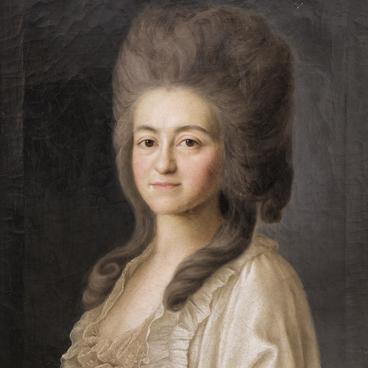The landscape painter Albert Żamett was born in 1821 in the city of Vilna (modern-day Vilnius) where his Prussian father settled after taking Russian citizenship. Between 1841 and 1847, Albert Żamett studied landscape painting under the guidance of Maksim Vorobyov at the Imperial Academy of Arts in St. Petersburg. After graduation, he went to Italy where he stayed until 1859. In the meantime, he also visited France, England, and Germany.
This twelve-year foreign trip was the heyday of the artist’s career. In 1854, he received the prize of the Academy of St. Luke in Rome for his view of Lake Nemi. The same year, he was awarded the title of non-class artist for his painting “Tivoli and Its Waterfalls” which he had sent to St. Petersburg. In 1859, he was promoted to the status of academician for his three views of the surroundings of Rome.
Albert Żamett painted “View of Albano” in 1852 while he was still a student at the Academy of Arts. Albano is a town located 25 kilometers away from Rome, on the shore of Lake Albano, which was formed in a volcanic crater. The surrounding area has always been famous for its beauty and has attracted artists. In particular, it was captured in many paintings by another Russian artist Sylvester Shchedrin. The famous Appian Way, named after Appius Claudius Caecus, a statesman from the Roman Republic, goes along the banks of Lake Albano. It was founded in the 4th century BC. Along this road, the Romans built grand villas, monumental tombs, and monuments. Not far from Albano, there is the Palace of Castel Gandolfo which served as the summer residence of the pope.
The lake has a surface area of six square
kilometers and a maximum depth of 170 meters. The water level is controlled by
an ancient drainage tunnel built back in 398 BC. The lake also hosted the
canoeing and rowing events of the 1960 Summer Olympic Games that were held in
Rome. Since the mid-1990s, the water level has become significantly lower due
to the growth of nearby settlements and their increased water consumption. The
growing papal gardens have also started to require more water.



